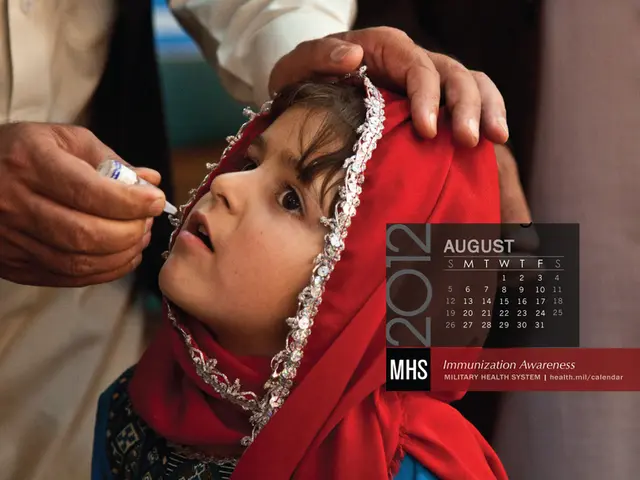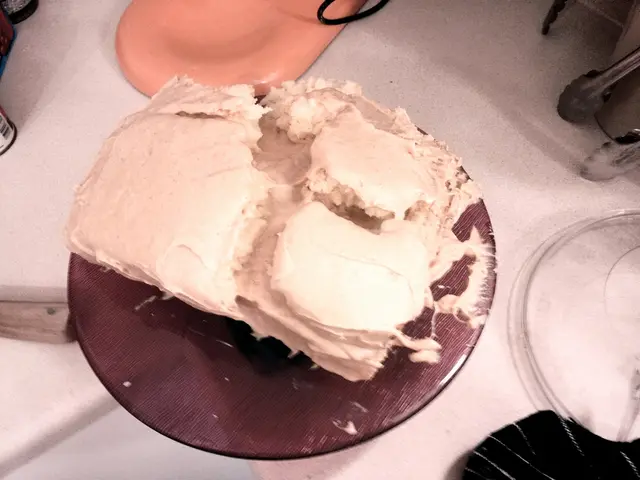Distinguishing aged spots from skin cancer: insight on discernment signs
Harmless Age Spots vs Potentially Harmful Skin Cancer: A Comprehensive Guide
As people age, they may develop harmless marks known as age spots, which can resemble some types of skin cancer or precancerous growths. Both conditions usually appear on sun-exposed areas, such as the hands, face, shoulders, but understanding their differences can help in early detection and treatment.
Age Spots vs Skin Cancer: Key Variables
While age spots and skin cancer may share visual similarities, some crucial variables set them apart:
Textural Differences:- Age Spots: Generally flat and smooth in texture, with well-defined borders [1].- Skin Cancer: May have irregular textures, and uneven, blurry, or ragged edges [4].
Color:- Age Spots: Usually present as yellow, brown, or gray patches on the skin [2].- Skin Cancer: Can manifest in various colors, such as pink, red, yellow, brown, blue, or black [3].
Placement:- Age Spots: Typically found on sun-exposed skin in individuals over 40 [2][3][5].- Skin Cancer: Can appear as new growths or changes in existing moles [4].
Understanding Symptoms and Diagnosis
Symptoms and signs that a suspicious mark may be cancerous include:- Asymmetrical shape- Irregular, blurred, or ragged edges- Changing size, color, or shape- Multiple colors on the same spot- Pink, blue, purple, black, or brown coloring- Raised, red patches- Pale or yellow firm patches, similar to scars- Pain, itching, oozing, or bleeding- Crusty or scaly patches- Raised edges that lower in the middle [4]
Actinic Keratosis, a type of precancerous growth, may also be mistaken for age spots [2]. Signs of actinic keratosis include:- Rough, scaly patches- Red, gray, pink, or skin-colored patches- Flat scaly patches that look similar to age spots- Scaly, rough bumps that can appear in clusters, similar to acne- Pale or scaly patches on the lips- Horn-like growths [2]
When to Consult a Doctor
A healthcare professional should be consulted if any unusual changes to the skin are noticed. Early diagnosis of skin cancer can improve treatment outcomes. Signs that merit a visit to the doctor include:- Changes in color, shape, size, or location- Lesions that look different from other marks on the skin- Itching, crusting, or scabbing that does not heal within four weeks [2]
Diagnosis and Treatment
Age spots can be diagnosed visually based on their appearance. However, if they appear irregular, a medical examination may be necessary [2][5]. Skin cancer diagnoses typically involve biopsies to confirm if a lesion is cancerous [4].
Treatment for age spots is usually cosmetic, with options such as laser therapy, chemical peels, or cryotherapy to reduce their appearance [5]. Skin cancer treatments depend upon the type and stage, with surgical removal, radiation therapy, chemotherapy, or immunotherapy being common options [4].
Prevention and Risk Factors
Age spots primarily result from cumulative sun exposure and aging, while skin cancer is linked to UV exposure, genetics, and other risk factors [2][3][5]. Sun protection is crucial to prevent both conditions, reducing the risk of developing them.
References:[1] Mayo Clinic. Liver spots: What you need to know. (2022). https://www.mayoclinic.org/diseases-conditions/liver-spots/diagnosis-treatment/drc-20372341[2] American Academy of Dermatology Association. Actinic keratosis. (2021). https://www.aad.org/public/diseases/skin-cancers/actinic-keratosis[3] American Cancer Society.igned Skin Lesions. (2021). https://www.cancer.org/cancer/cancer-causes/uv-radiation-from-the-sun-and-tanning-beds.html[4] American Society for Dermatologic Surgery. Skin Cancer. (2020). https://www.asds.net/portal/prescription-for-health/skin-cancer[5] diagnosis, A. (n.d.). Understanding Age Spots or Solar Lentigines for Skin Care and Dermatology. https://www.mdlinx.com/dermatology/319725749/
- While age spots commonly appear on sun-exposed areas of seniors and are generally flat, smooth, and well-defined, skin cancer may exhibit irregular textures, blurry, or ragged edges and can manifest in various colors.
- Beyond age spots and skin cancer, other skin conditions like melanoma and otherskincancer can also share visual similarities but may have distinct characteristics such as multiple colors or asymmetrical shape.
- In understanding health-and-wellness issues, dermatology and oncology are vital medical-conditions areas that research the prevention, detection, and treatment of various skin-care issues, including age spots and skin cancer.
- Skin-conditions like actinic keratosis, a precancerous growth, can be mistaken for age spots and may require medical examination and treatment to ensure proper diagnosis and early intervention.
- To maintain skin-care and prevent the development of age spots and potentially harmful skin cancer, it's essential to practice science-backed skin-care habits, including avoiding excessive sun exposure, using sunscreen, and regularly consulting a healthcare professional for routine check-ups.








